Miguel
León-Portilla,
the renowned Mexican ethnographer, tells us that “the
literary production of ancient Mexico was far more prolific than is
generally recognized”
(173). I would not come to know this until 1969, the year I read León-Portilla’s
work; the year I began my study of Backgrounds of Mexican
American Literature (first study in the field) at the University
of New Mexico.
León-Portilla’s
work figured prominently in my research as I sought to create a
taxonomical scaffold for the history of Mexican American literature.
What started out as the organization of a course in Mexican American
literature led to my research in Backgrounds of Mexican American
Literature and has turned out to be a passion in my academic
career which now spans almost 60 years.
In
the summer of 1969 I was on leave from New Mexico State University
in Las Cruces as a Teaching Fellow in the English Department at the
University of New Mexico at Albuquerque when Louis Bransford,
recently appointed head of the embryonic Chicano Studies program at
UNM, asked me to put together a course in Chicano literature–a
term that would gain prominence from that year on. Of course, I
assured him, naively thinking
the task would be like organizing any
other course. Little did I know what lay in store for me.
As
a consequence of that course I came to realize what a trove of
literature Mexican Americans had produced since 1848 when Mexico was
dismembered and more than half its territory seized by the United
States as plunder of the war against Mexico (1846-1848). As the
first literary history in the field, Backgrounds of Mexican
American Literature would only be a starting point. Addressing
the “New
World”
roots of Mexican American Literature, I wrote:
The
taproots of Mexican American literature are not only planted in the
Hispanic literary tradition, which reaches back to the Spanish
peninsula and to the heart of the Mediterranean world, they are
planted also in the literary soil of the new world (17).
Adding
that:
We
should bear in mind, as Willis Barnstone reminds us in his
Introduction to Ignacio Be-rnal’s
work on Mexico Before Cortez (1963), that “the
Mexican [American] has a profound sense of cultural continuity
extending back into [Mexico’s]
prehistory”
(18).
It’s
important to remember that the Spaniards did not bring “civilization”
to Mexico. When Cortez passed between the high volcanos of Popocatepetl
and Ixtazihuatl on his way to the valley of Mexico (Tenochtitlan),
he was traveling in the land of a people who had already achieved a
high state of civilization, its grandeur no less diminished when
compared to the civilization of the European invaders.
The
Aztecs were expert horticulturalists. In fact, according to Foster
and Cordell, crops of Meso-American origin, “sustain
a large proportion of the Earth’s
present population”
(xiv). And in The Columbian Exchange, Alfred Crosby maintains
that the fact that “American
crops thrived in adverse conditions gave them a critical role in the
world population boom of the past two centuries; such a boom
probably could not have occurred without them”
(cited in Foster and Cordell, xiv-xv).
There
were grand botanical gardens in Mexico long before the Europeans had
them. Pre-conquest Mexico was not a land of savages and brutality as
depicted in historical accounts. It was, in every sense of the word,
a developing nation. Bernal Diaz del Castillo, Cortez’
chronicler of the True History of the Conquest of New Spain,
captured the wonder of the new world when he wrote:
And
after we saw so many cities and towns built on the water, and other
cities on the surrounding land, and that straight and level causeway
which entered the city, we were amazed and said that it was like the
enchanted places recounted in Amadis de Gaula, because of the
great towers and buildings which grew out of the water, all made of
stone and mortar, and some of our soldiers even asked whether what
they saw was not a dream, and so no wonder that I write in this way,
for there is so much to ponder in all these things that I do not
know how to describe them. We saw things never heard or dreamed
about before”
(LXXXVII)
Consider
Bernal Diaz’
observation compared to 18th century comments that
characterized the indigenous peoples of the Americas as
brutish savages still using crude implements of bone and stone,
incapable of the organization and marshaling of resources necessary
for building cities or maintaining imperial institutions (Borah and
Cook, 1-2).
The
New World ancestors of Mexican Americans were not only a highly
cultured and highly urban people, they were a literate people as
well. As Stan Steiner put it, “no
people in the New World have an older written history than the
Mexican Indians”
(24). Indeed, the Olmec writing system, for example, dates back to
at least 600 BC. Before the arrival of the Spaniards in Mexico there
existed a rich autochthonous literature. Unfortunately, much of the
pre-Columbian literature of Mexico was destroyed by the fiery
antipathy of Spanish clerics who incinerated what Indian writing
they could get hold of because to them it represented a pagan
tradition spiritually opposed to their own. The indigenous “texts”
were destroyed because they were thought to be heretical products of
the devil with their iconographic / pictographic figures and
symbols. At the time, Bishop Landa of Yucatan has been quoted as
saying: “We
found a large number of books of these characters [codical writing],
and as they contained nothing but superstition and lies of the
devil, we burned them all”
(Peterson, 240).
The literature of the vanquished is always the first victim
of any conflict, especially cultural conflicts. Though Fray Juan de
Zumarraga and Fray Diego de Landa sought to extinguish those “heretical
texts,”
some of them escaped the fire and were later rendered into western
writing. Fortunately, the Popol Vuh, the Mayan bible or the
Quiché
Book of Being, was one of those works which survived and
which has been translated into Spanish and English. The Mayan book
of the Jaguar Priest, the Chilam Balam, and the Annals of
the Xahil also survived. In all, fourteen codices survived, but
ironically they are reposited today elsewhere than in Mexico. Only
copies exist there. Some of the works of King Nezahualcoyotl (d.
1472) of Texcoco, the poet-King or the David of the Aztecs, survived
and have also been translated into Spanish and English. At every
turn, the Spanish colonial administration in Mexico sought to
suppress the intellectual productivity of the indigenous people.
After the conquest, Fernando de Alva Ixtilzo-chitl wrote of
the exploits of his ancestor with the same name, Ixtilxochitl,
Prince of Texcoco, during the conquest, translating the Aztec
writing into Spanish. Today, the quality of pre-Hispanic literature
may be surveyed in a number of works including The Broken Spears:
the Aztec Account of the Con-quest of Mexico (Beacon Press,
1962) by Miguel León-Portilla,
or in his other work on Aztec Thought and Culture (University
of Oklahoma Press, 1969). Other works on New World literature
include Daniel G. Brinton’s
Ancient Nahuatl Poe-try (Philadelphia, 1890), John H. Cornyn’s
Aztec Literature in the XXVII Congress International des
Americanistes (Mexico, 1939), Angel Maria Garibay-K’s
Historia de la Literatura Nahuatl (Mexico, 1935), and Antonio
Peñafiel
(Editor), Colleccion
de Documentos
Para la Historia de Mexico, 6
Volumes (Mexico,1897-1903).
The
pre-Columbian literature of Mexico consisted entirely of codices;
that is, a long, screen-like, accordion-pleated parchment of animal
skin or amate
(paper) made smooth in a solution of lime with “writing”
on both sides. (Post-conquest codices were constructed of cloth.
Paper was used in Aztec rituals and was an important item of trade
and tribute in pre-Cortesian Mexico. The town of Cuernavaca paid its
tribute in paper to the Aztec emperor).These codices dealt with a
variety of subjects. The Mexicans had books on agri-culture, botany,
law, magic, medicine, poetry, sports, songs, etc. For example, the Tonalamatl
was the sacred almanac which recorded the tonalpohualli, the
count of souls in the year. The scribes were called tlacuilos,
and they recorded on codices the most minute events of Mexican life.
While
the Mexican languages were essentially phonetic in utterance they
were rendered on codices in ideographic form, comparable to Chinese
and Japanese writing. A codex could be opened and read in a number
of ways. Though relatively little pre-Hispanic Indian literature
survived the Spanish holocaust, Peterson opined hopefully:
there
is always the possibility that some ancient codex lies forgotten in
a trunk in some attic in Europe, or is a jealously kept secret in
some town in Mexico, or is hidden under dusty files in a library,
and will eventually add to our store of information (Op. Cit.,
241).
One
of those ancient codices, the de la Cruz-Badiano Codex,
albeit written in 1552 some 30 years after the conquest of Tenochtitlan
(Mexico City) by Cortez, was returned to Mexico in 1990 by Pope John
Paul II from the Vatican library almost 440 years after it left
Mexico. The codex was the Latin version translated by Juan Badiano,
an Aztec nobleman, from the Nahuatl version (which did not survive)
written by Martin de la Cruz, an Aztec physician, both of whom were
members of the College of Santa Cruz in Tlatelolco (Byland, iii).
While
the literature I am discussing here is part of the indigenous
pre-Columbian literary legacy of Mexicans, it is also the indigenous
pre-Columbian literary legacy of Mexican Americans, the historical
baseline–its
roots, so to speak. Particularly since many of the symbols of the
Chicano Movement were appropriated from that indigenous past,
symbols like the Quinto Sol–as
in Quinto Sol Publications–and
Flor y Canto for literary and cultural gatherings. Quinto Sol
was the fifth sun under which the Nahuas believed they lived. Four
previous suns (worlds) had been des-troyed. In the pre-Columbian
indigenous society of Mexico literary and cultural festivities were
celebrated with flowers and songs–flor
y canto,
the name appropriated for Chicano literary events. What is
remarkable about the Chicano Movement is its iconography,
particularly its identification with the pre-Cortesian icons of
Mexico.
The
significance of the Chicano Movement and its off-spring the Chicano
Renaissance lies in how the Chicano Movement became instrumental in
the identity formation of Mexican Americans. Before the Chicano
Movement, Mexican Americans tended to regard them-selves via
perspectives Anglo America had of them–that
they were Coronado’s
Children. The Chicano Movement helped Mexican Americans in coming to
terms with the duality of their identity–that
they were not only Coronado’s
Children but also Montezuma’s
Children. To be whole–unless
they were purely indigenous–they
had to acknowledge the mestizaje (blending) that produced
them as la raza as they came to consider themselves
collectively. Chicano parents of the 60s readily gave their children
Nahuatl names.
The
first issue of El Grito: Journal of Mexican American Thought
published by Quinto Sol Publications in the Fall of 1967 proclaimed
editorially that Mexican Americans (becoming Chicanos) would say who
they were, not mainstream or Anglo America which saw them as “simple-minded
but lovable and colorful children who because of their rustic naïveté,
limited mentality, and inferior, backward ‘traditional
culture,’
choose poverty and isolation instead of assimilating into the
American mainstream and accepting its material riches and superior
culture.”
Inasmuch as the mainstream rhetoric about them was a “grand
hoax, a blatant lie–a
lie that must be stripped of its esoteric and sanctified verbal garb”–henceforth
they would reject that institutional and missionary main-stream
rhetoric about them and their heritage for a rhetoric that exalted
them as heirs of a heritage richer than the one being imposed on
them. “Only
Mexican Americans themselves”
could bring about “the
collapse”
of that “intellectually
spurious and vicious”
mainstream rhetorical structure about Mexican Americans by exposing
its “fallacious
nature”
via “the
development of intellectual alternatives.”
El
Grito
has been founded for just this purpose –to
provide a forum for Mexican-American self definition and expression
on this and other issues of relevance to Mexican-Americans in
American society today (Romano, 4).
Henceforth, Chicano readers would be judges of Chicano
literature which would create its own critical strictures and its
own critical aesthetic. El Grito was the manifesto of Chicano
liberation from Anglo-American intellectual traditions that
marginalized non-privileged perspectives. In a quantum leap, the
consequence of that editorial prompted Mexican Americans to look
back to their pre-Columbian indigenous roots while, at the same
time, helping them to take stock of their blended evolution.
Jose Vasconselos, the great Mexican educator, was right: los
mestizos had become la raza cosmica–the
cosmic people.
For Mexican Americans, what was missing was mythos–an
epic saga of la raza and its dias-pora in the United States.
Mexican Americans (now Chicanos) revivified the myth of Aztlan–the
ancient homeland of the Aztecs–as
an allegory for a Chicano homeland, an icon that has en-gendered
ideological wariness because of its putative designation for the
Aztec place of origin. The Hispanic Southwest–that
part of Mexico which was dismembered and annexed by the United
States per the Treaty
of Guadalupe Hidalgo on February 2, 1848 terminating the U.S. War
Against Mexico—would
become Aztlan.
No
one is sure where Aztlan was, except that in Aztec lore the
Aztecs emerged from the bowels of the earth through the seven caves
of Chicomostoc located in the heart of Aztlan. During
the fourth sun (Quarto Sol) of creation, a great tidal wave
destroyed Aztlan and forced the Aztecs to flee at the dawn of
the Fifth Sun (Quinto Sol). That flight resulted in the seven
peregrinations of the tribe, an odyssey that took them from the
original place of Aztlan across many lands over many
generations all the while keeping an eye out for the sign that
designated the place for their new homeland. Where they saw an eagle
perched on a cactus, holding in its beak a serpent, there would be
their new homeland. The city they built on the island surrounded by
Lake Texcoco in the valley of Anáhuac
they called Tenochtitlan after their designation as tenochcas.
Rendering
meaning from Aztec symbols is difficult because the Nahuatl language
provides for three levels of meaning for any given word--the
li-teral, the connotative, and the syncretic. Some scholars suggest
that by its very name, Aztlan must have been an island
homeland. Morphologically, Aztlan may have been originally Azatlan
(as inscribed in the current place word Mazatlan) with the
morphemes az, atl, and an. The morpheme a
generally designates water in the Nahua language, and the tl
is a noun marker. An is a place designation. Az has
been variously rendered as the word heron. Thus, Azatlan
could mean “the
watering place of the herons.”
Or “the
home of the herons mid the waters.”
And “Mazatlan”
means “watering
place of the deer.”
The fact that after their long trek the Aztecs found an eagle
perched on a cactus and holding a serpent in its beak on an island
in the middle of Lake Texcoco lends credence to the
suggestion that their original homeland could have been an
island surrounded by water—a
place where herons migrated to. The mor-pheme az may also be
rendered as eagle. The sign completes the mystery, particularly
since the eagle was the “national”
bird of the Aztecs.
A corollary bit of information raises an intriguing
suggestion. When we look at the word Atlantic we see the
morphemes atl, an and tic. Some scholars see a
linguistic correspondence between the word Atlantic and Azatlan
of the Aztecs. By extension, those scholars suggest that Aztlan
could be the Atlantis of fable mentioned in Plato’s
Cratylus. Far-fetched as that may sound, the linguistic
connection is not easily laid aside.
Much of what we know about the Aztecs, los Señores
de Mexico as they have come to be called, comes to us not from the
Aztecs themselves nor from primary sources but from sources
considerbly removed from the historical moments of the Aztecs. And
the primary sources that could have been of some use to us in
understanding the Aztecs were burned by the early prelates, like
bishop Zumárraga,
as pictographic representations of the devil. We do know that on the
eve of conquest, the population of the Aztec empire may have been as
high as 50 million (Borah and Cook, 4), twice the population of
present-day Iraq.
Added to this were the post-Cortesian accounts of the Aztecs
as barbarous and blood-thirsty cannibals. However, according to
Miller and Taube, for the Aztecs “the
eating of human flesh was neither common nor casual”
(54). Spanish efforts to denigrate further the Aztecs made them out
to be a derivative culture, always borrowing from other cultures to
enhance their own, much like the Romans appropriating Greek culture
to enhance their own. One such enhancement is reputed to have
occurred during the Aztec sojourn in the Toltec city of Tollan.
Be
that as it may, iconically Aztlan has be-come an important
symbol for Chicanos, for it has come to represent ideological
aspirations of the Chicano Movement. In terms of the latter, Aztlan
has been identified as the territory of the Mexican Cession through
which the Aztecs migrated in their diasporic search for their new
homeland. In the search for Aztlan some scholars place it in
central Oregon at a site some 10,000 years old. Others suggest that
the Aztecs could be the ancient Hohokam people of the Southwest four
corners area, particularly since the Hohokam played a game with hard
rubber balls similar to the game of the Aztecs. The Tanner-Disturnall
map so central to the Treaty of Guadalupe Hidalgo points to the
Casa-grande Ruins in Arizona as the “ruins
of the second houses of the Aztecs.”
And a site for Aztlan has been “marked”
on the coast of North Carolina, furthering the suggestion that the
Aztecs could have come from some Atlantic site, making ground on the
eastern shore of what is now the United States.
Surprisingly,
present-day Aztecs are not considered reliable informants about Aztlan.
There are still some 1.2 million Aztecs who live in south central
Mexico and who speak Nahuatl, though centuries removed from the
Nahuatl of the Aztec empire before Cortez. Ideologically, locating Aztlan
is of no import to the future of Chicanos. For Aztlan is a
country of the mind. That’s
how it began, much like the origins of Camelot, another country of
the mind. And perhaps that‘s
where it needs to stay.
As a country of the mind we are free to cogitate about Aztlan
however we may, to endow it with whatever characteristics we will.
It’s
not important how congruent our “sense”
of Aztlan is with the actualities of Aztlan, for no
one really knows what Aztlan may have been like save for the
remnant accounts we have in the surviving “literature”
of the Aztecs. For that matter, we know precious little about the
Aztecs except for the accounts passed on to us by the Spaniards. The
Aztecs received as bad a press from the Spaniards as Mexican
Americans have received from Anglos in the American South-west since
1848.
Until 1980 when I began researching the Aztecs for the play Madre
del Sol / Mother of the Sun commemorating the 450th
anniversary of the Virgin de Guadalupe (commissioned by
Arch-Bishop Patrick Flores of San Antonio), I had bought into the “history”
of the Aztecs as described in various texts–bloodthirsty
and serving up hundreds of human sacrifices daily. But my research
for Madre del Sol / Mother of the Sun turned up no pre-Cortesian
sources for the mal-characterization of the Aztecs. If the Aztecs
regularly sacrificed so many humans, I asked, where were the skulls?
When the Leakey’s
were excavating in the Olduvai Gorge they uncovered thousands of
skulls from antiquity. Surely such remains from Aztec times would
have been unearthed during excavation for the Mexico City subway.
Many other things turned up but no cache of skulls.
Anyway, Aztlan seems to have been an apt icon for the
Chicano Movement, particularly since the Chicano Movement sought to
elevate prominently the indigenous roots of Mexican American
identity, an identity that even in Mexico had become pervasive.
Chicanos were not seeking to eradicate their Spanish roots. Like the
dual creatures in The Dark Crystal, Chicanos sought to
reconcile the two parts of their identity--they were Indian and they
were Spanish.
By promoting pride in their Indian roots, Chicanos of the
Chicano Movement were building pride among Chicanos about who they
were. They were Mexico’s
children in the United States in a land once theirs; more
importantly they were Montezuma’s
Children–those
who had survived the Spanish holocaust. Their Aztec forebears
epitomized a great civilization in which medicine, mathematics,
philosophy, art, architecture, and engineering were taught; where
books were printed and writing was valued.
“Their
writing (and they had it in a full sense) was Ideographic”
(Gates, xxxviii).
Important to Chicanos in choosing Aztlan as an icon of
the Chicano Movement was that it heralded Chicanos as descendants of
an illustrious historical heritage. In this sense, Chicanos moved mejicano
identity beyond the Eurocentric. As a consequence of the Chicano
Movement and Aztlan, Chicanos gave notice to the American
mainstream that Chicano identity would be what Chicanos said it was
and not what the American mainstream said it was. Reaching across
the centuries to link up with Aztlan gave Chicanos a
historical center they did not have simply as an unanchored
diasporic people trying to come to terms with the infran-gibility of
their present and their past.
Aztlan
need not be real. Lots of people claim mythic homelands. The English
have Avalon and Camelot; the Germans have Valhalla;
the Tibetans have Shangri-la; the French have San Souci.
The strength of myth is the strength of pride that it engenders. Is
it important to know exactly where Aztlan was? What may be
more important is that for one brief and shining moment it was
and is still in the imagination of Chicanos where, like
Milton’s
unsightly root, in another country it bore a bright and golden
flower.
WORKS CITED
Borah,
Woodrow Wilson and Cook, Sherburne Friend. The Aboriginal Population of
Central Mexico on the Eve of the
Spanish Conquest, University of California Press,
1963.
Byland,
Bruce. “Introduction”
to An Aztec Herbal: The Classic Codex of 1552,
20000.
Diaz
del Castillo, Bernal. True History of the Conquest of New
Spain (A.P. Maudslay translation, 1958).
Foster, Nelson and Linda S. Cordell (Eds.), Chilies to Chocolate: Food the Americas Gave the World, University of Arizona Press, 1992.
Gates, William, “Introduction to the Mexican Botanical System,” An Aztec Herbal: The Classic Codex of 1552, 1939.
Leon-Portilla, Miguel. Pre-Columbian Literatures of Mexico, 1969.
Miller, Mary and Taube, Karl. An Illustrated Dictionary of the Gods and Symbols of Ancient Mexico and the Maya, 1993.
Ortego y Gasca, Felipe de. Backgrounds of Mexican American Literature, University of New Mexico, 1971.
Peterson, F. Ancient Mexico: An Introduction to the Pre-Hispanic
Cultures, 1959.
Romano, Octavio, ed. El Grito: Journal of Mexican American Thought, Volume 1, Number 1, 1967.
Steiner, Stan. La Raza: The Mexican Americans, 1969.
Copyright 2007 by the author. All rights reserved.

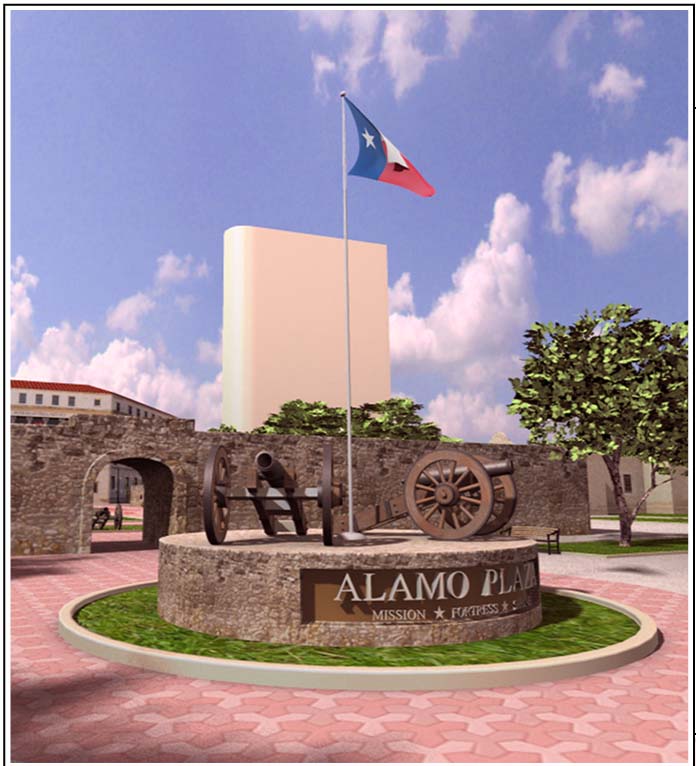
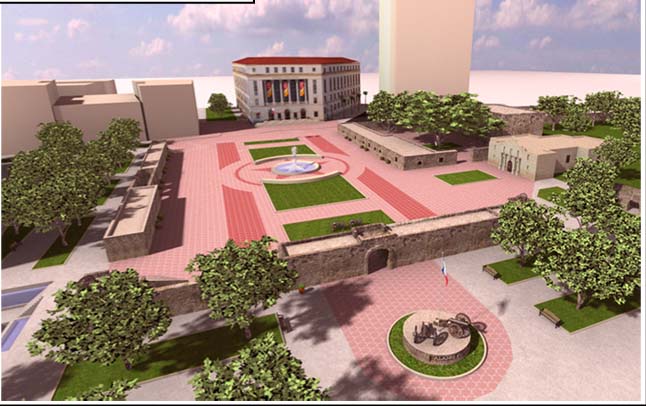
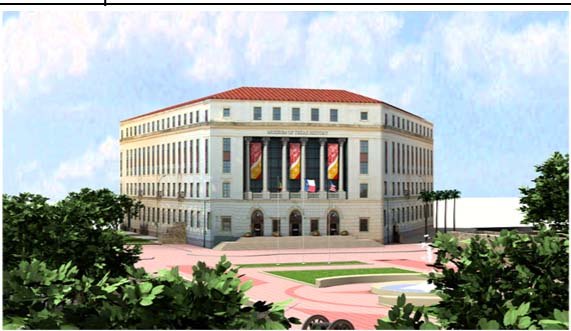
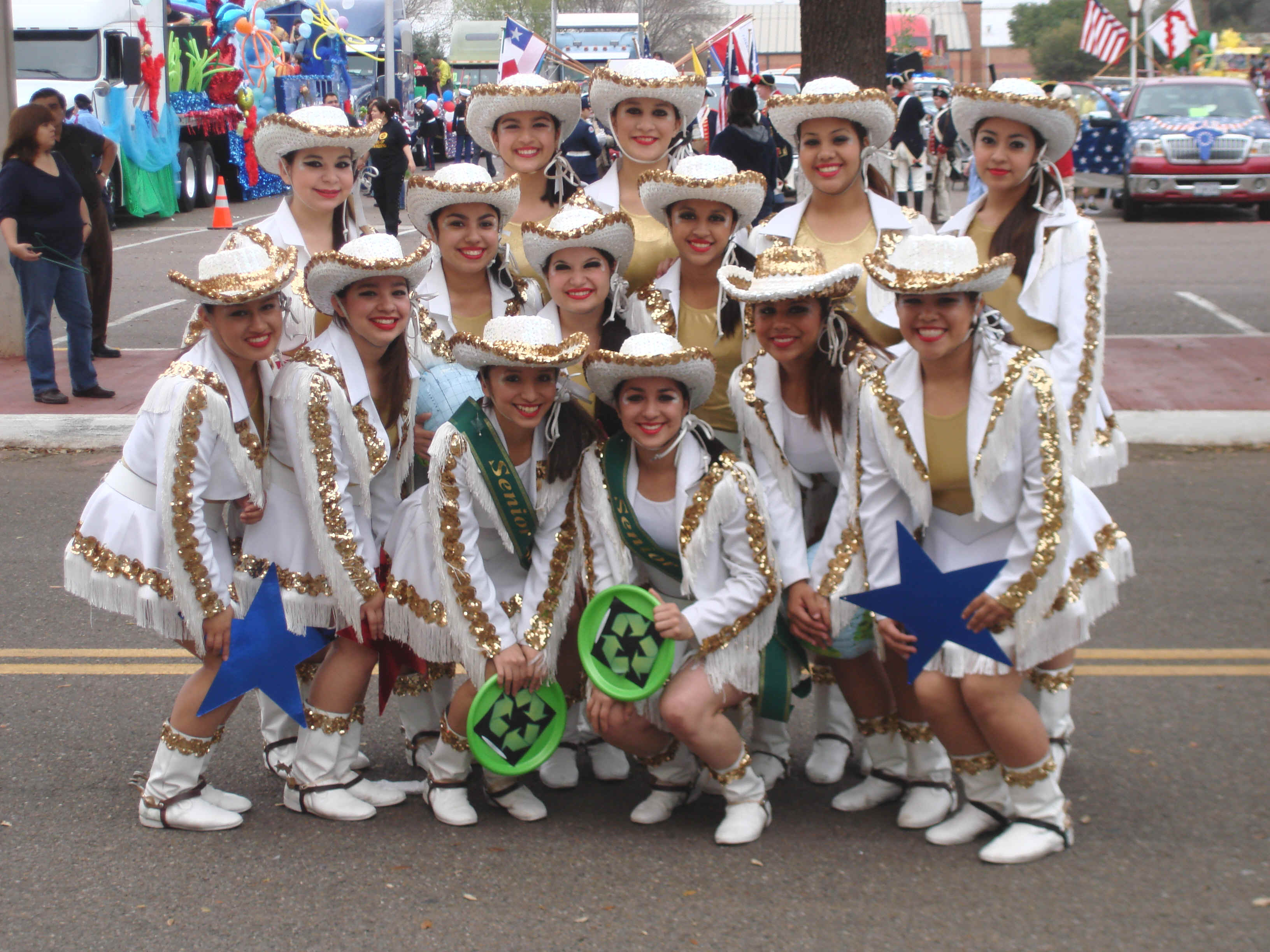
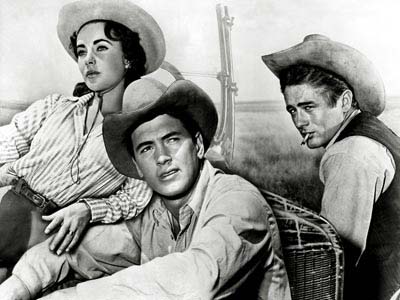 While
Edna Ferber was preparing for her great Texas novel, Giant, which
eventually was made into a movie, staring [Elizabeth Taylor, Rock
Hudson, and James Dean] she contacted my father Dr. Hector P. Garcia.
While
Edna Ferber was preparing for her great Texas novel, Giant, which
eventually was made into a movie, staring [Elizabeth Taylor, Rock
Hudson, and James Dean] she contacted my father Dr. Hector P. Garcia.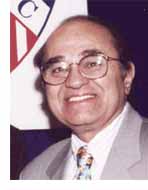 Eduardo Peña received the 2009 National Hispanic Hero Award on
March 20, 2009 in Chicago, which included a video tribute. The award
was presented by the United States Hispanic Leadership Institute (USHLI)
during the organization's 27th annual conference, was attended by
over 6,000 past, present and future leaders representing 40 states.
Eduardo Peña received the 2009 National Hispanic Hero Award on
March 20, 2009 in Chicago, which included a video tribute. The award
was presented by the United States Hispanic Leadership Institute (USHLI)
during the organization's 27th annual conference, was attended by
over 6,000 past, present and future leaders representing 40 states. 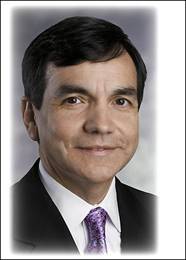
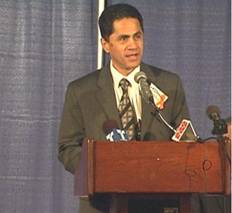





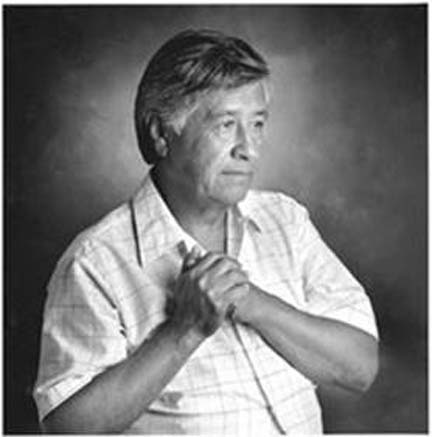
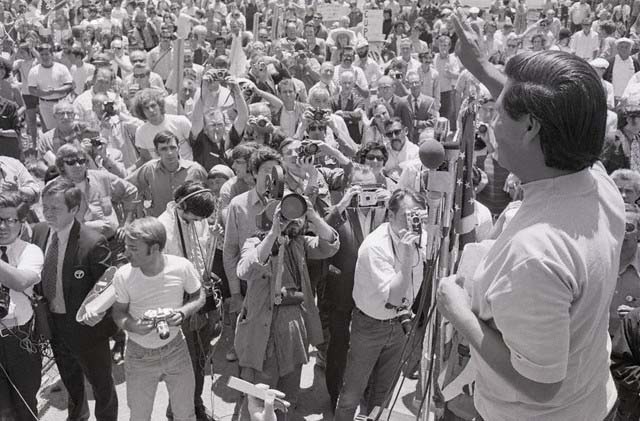
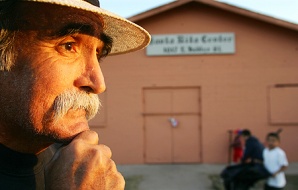 Benito,
who worked as a migrant farm worker as a young adult, was drawn to
Chavez for his heart and compassion but also because of his adamant
stand for improving working conditions.
Benito,
who worked as a migrant farm worker as a young adult, was drawn to
Chavez for his heart and compassion but also because of his adamant
stand for improving working conditions.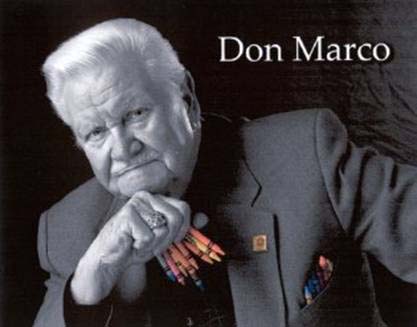

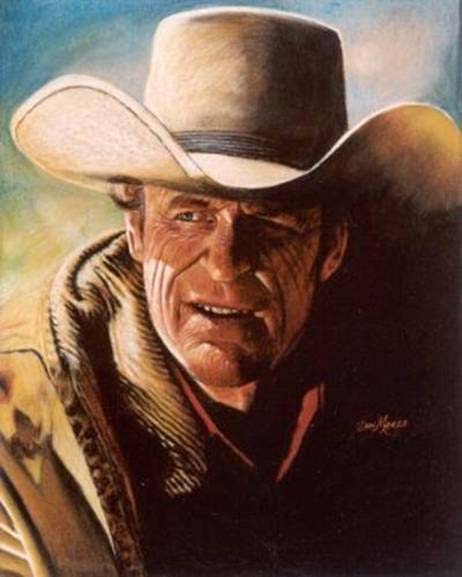
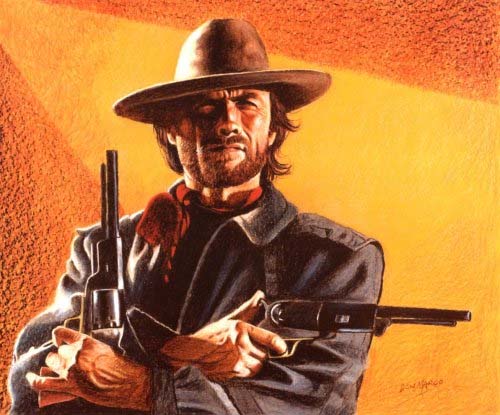
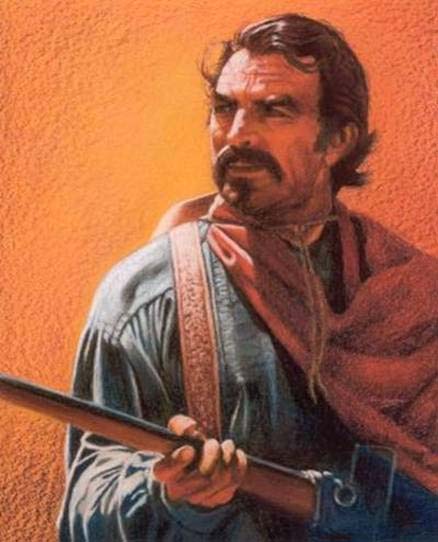

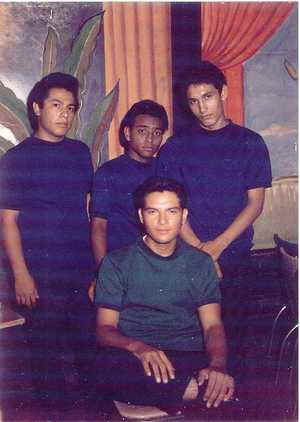 A group of Victoria teenagers rose above that and became successful,
known nationwide but never locally.
A group of Victoria teenagers rose above that and became successful,
known nationwide but never locally.
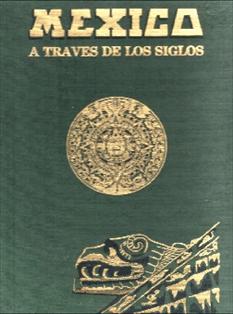
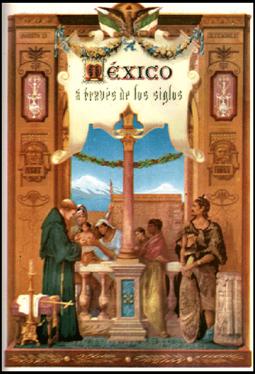
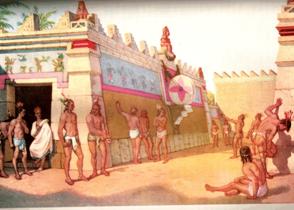
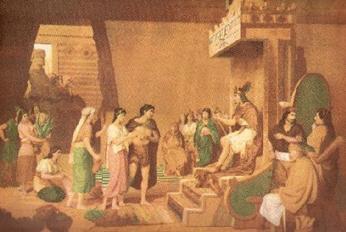
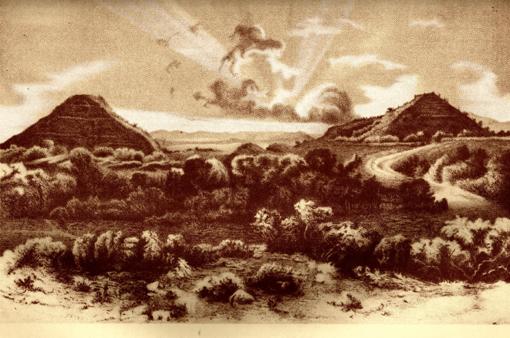
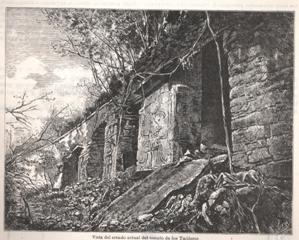
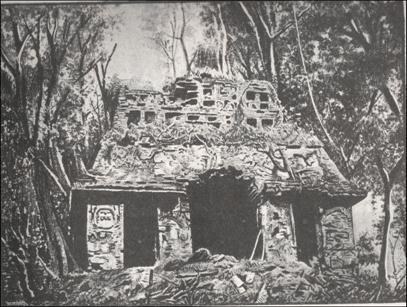
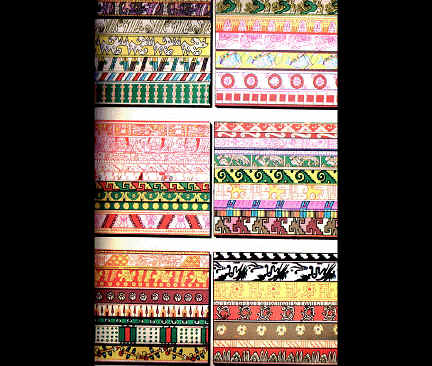
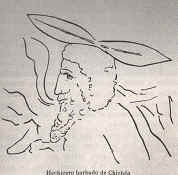
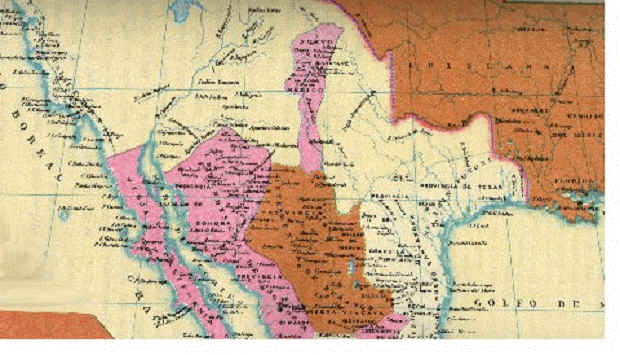
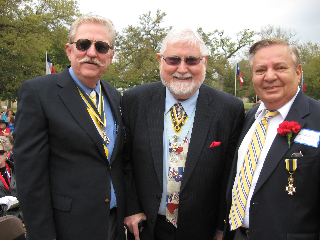
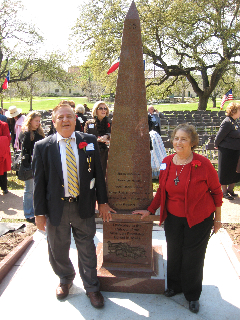
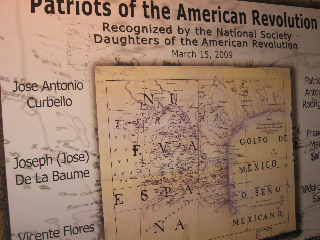
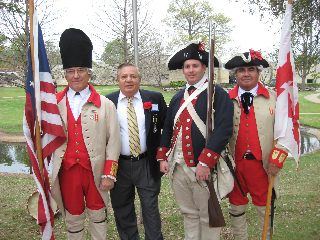
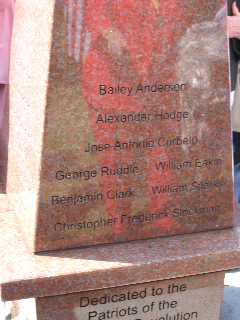
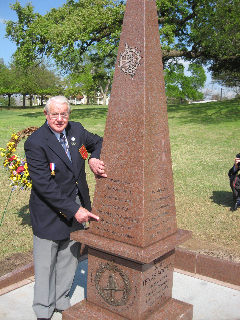 Judge Robert H.
Thonhoff, distinguish author and historian.
Author of, Texas Connection to the American Revolution. Both
Judge Butler and Judge Thonhoff have made significant contributions
to opening the doors for our Spanish Ancestors being recognize as
Patriots and descendants being eligible for membership into the
Daughters of the American Revolution and the Sons of the American
Revolution. Membership is encourage to join the National
Society of the Sons of the American Revolution, website address:
Judge Robert H.
Thonhoff, distinguish author and historian.
Author of, Texas Connection to the American Revolution. Both
Judge Butler and Judge Thonhoff have made significant contributions
to opening the doors for our Spanish Ancestors being recognize as
Patriots and descendants being eligible for membership into the
Daughters of the American Revolution and the Sons of the American
Revolution. Membership is encourage to join the National
Society of the Sons of the American Revolution, website address: 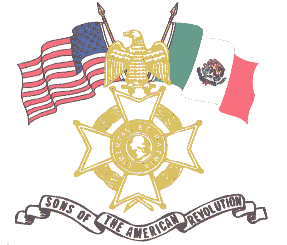
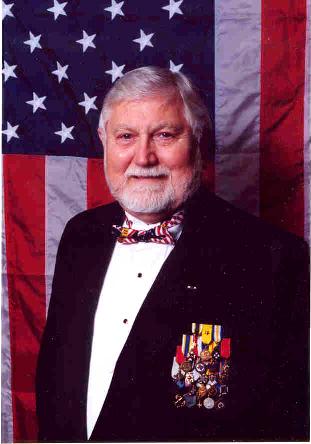
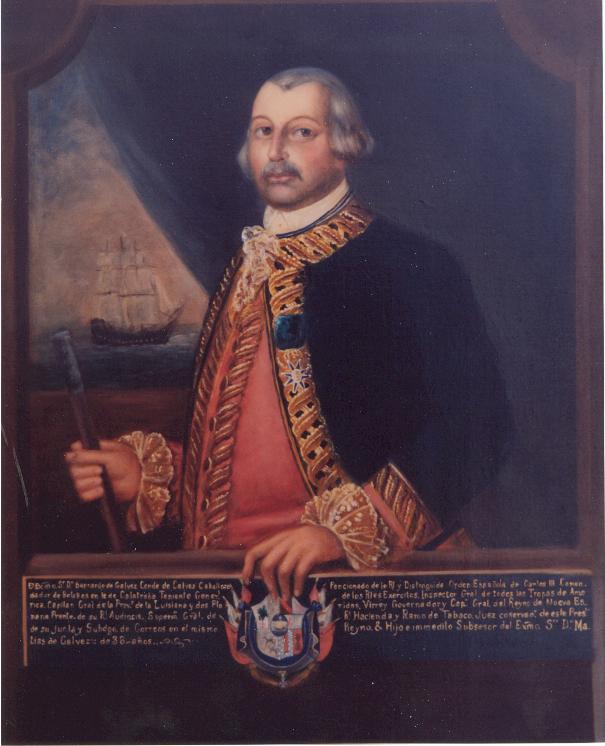 The SAR is
sponsoring a trip to Spain May 10 - 20, 2010, with an optional
3 day extension that will allow you to visit Gibraltar and Tangier,
Morocco. DAR, SR, Founders and Patriots, TCARA, Granaderos de Galvez,
Society of 1812 and other lineage and historical groups are invited to
participate. Robin and I will be leading the trip, supported by David
Eld, the travel agent who put together this trip as well as the SAR
1997 trip to Spain.
The SAR is
sponsoring a trip to Spain May 10 - 20, 2010, with an optional
3 day extension that will allow you to visit Gibraltar and Tangier,
Morocco. DAR, SR, Founders and Patriots, TCARA, Granaderos de Galvez,
Society of 1812 and other lineage and historical groups are invited to
participate. Robin and I will be leading the trip, supported by David
Eld, the travel agent who put together this trip as well as the SAR
1997 trip to Spain. Dr.
Hector's daughter, Daisy Wanda Garcia and I met by phone in 2006 and
had been communicating back and forth, ever since. I sent
her the wonderful news that we were primas, and we rejoiced that
beyond being the friends that we had become, we were actually
related!!
Dr.
Hector's daughter, Daisy Wanda Garcia and I met by phone in 2006 and
had been communicating back and forth, ever since. I sent
her the wonderful news that we were primas, and we rejoiced that
beyond being the friends that we had become, we were actually
related!!
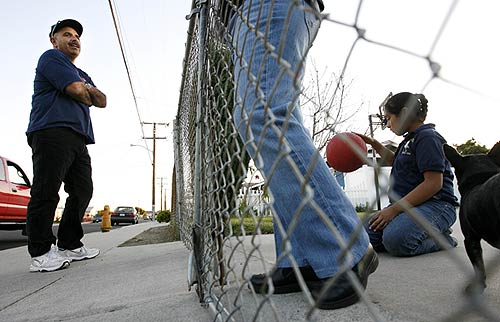

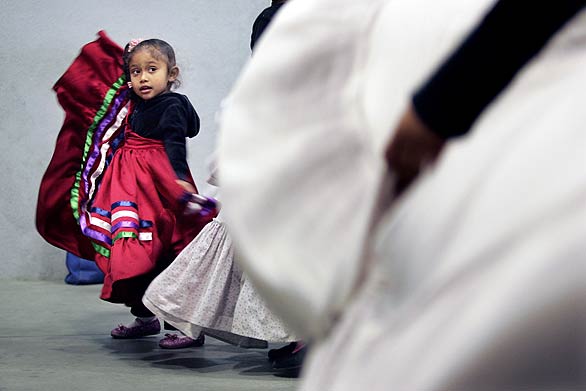
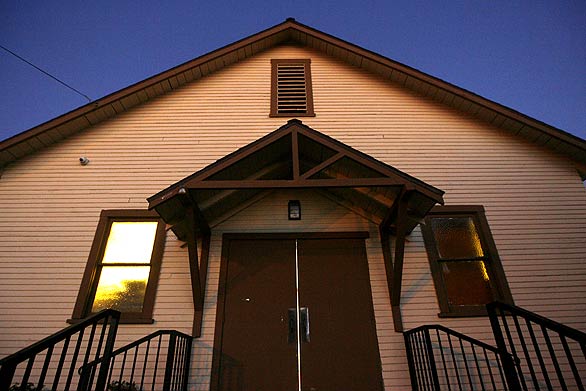
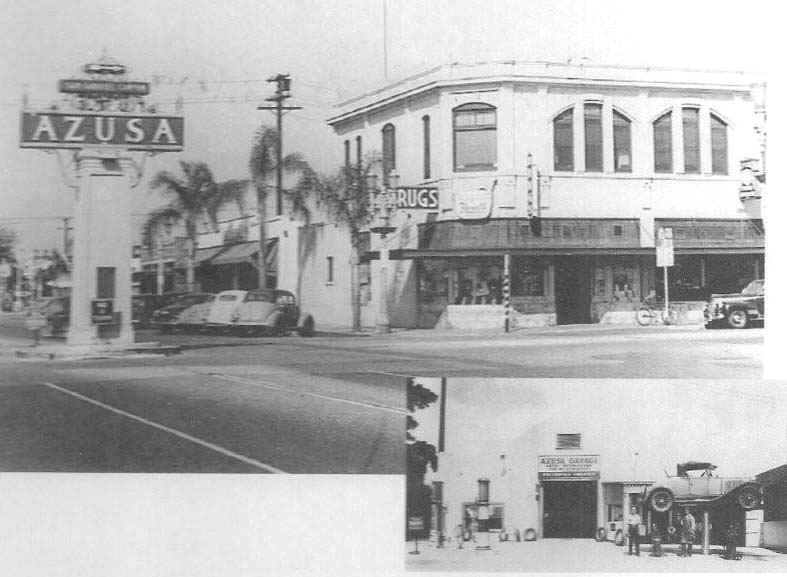
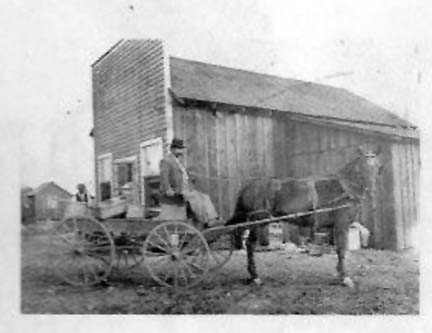 One
of the oldest pictures in their book, dates back to 1859, with many
family photos taken during the early 1900’s. The pictorial chapters
in this joint creation feature “Children from the Past”,
“Weddings”, “The Builders along Historic Route 66”, “School
Days”, which includes class pictures of elementary schools in Azusa
and Baldwin Park dating back to 1945. Other chapters included are also
“Los Soldados”, “Los Cabelleros”, and finally a chapter called
“Family and Friends.”
One
of the oldest pictures in their book, dates back to 1859, with many
family photos taken during the early 1900’s. The pictorial chapters
in this joint creation feature “Children from the Past”,
“Weddings”, “The Builders along Historic Route 66”, “School
Days”, which includes class pictures of elementary schools in Azusa
and Baldwin Park dating back to 1945. Other chapters included are also
“Los Soldados”, “Los Cabelleros”, and finally a chapter called
“Family and Friends.”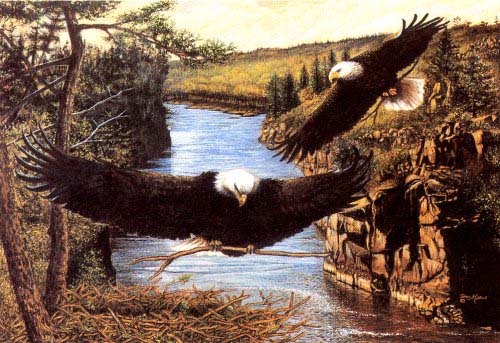
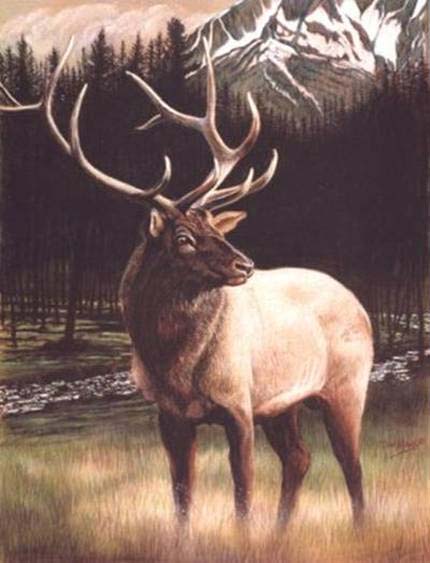
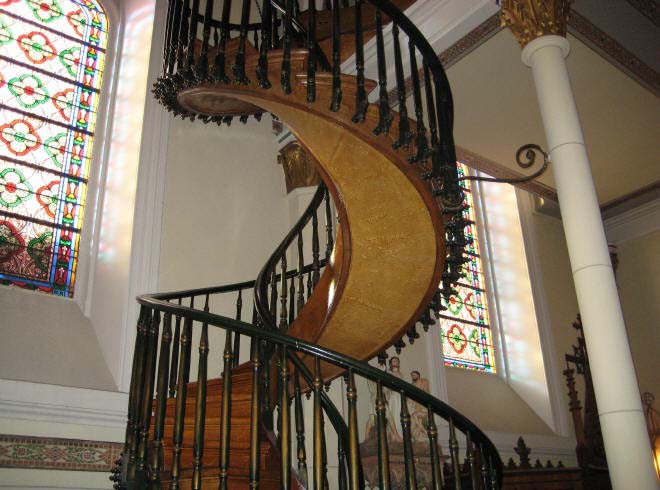
 Skeletons
that may represent the remains of crew members from Columbus' second
excursion to the New World in 1493-94 were exhumed in 1990. The
burials were a part of La Isabela on the island of Hispaniola, now a
part of the Dominican Republic and that was the first European
settlement in the New World. Credit: Fernando Luna Calderon,
provided courtesy of T. Douglas Price
Skeletons
that may represent the remains of crew members from Columbus' second
excursion to the New World in 1493-94 were exhumed in 1990. The
burials were a part of La Isabela on the island of Hispaniola, now a
part of the Dominican Republic and that was the first European
settlement in the New World. Credit: Fernando Luna Calderon,
provided courtesy of T. Douglas Price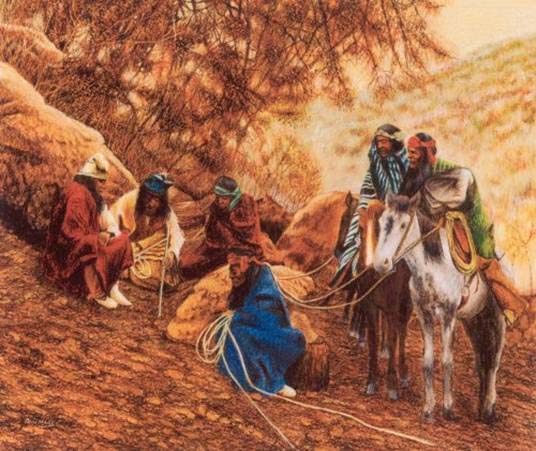
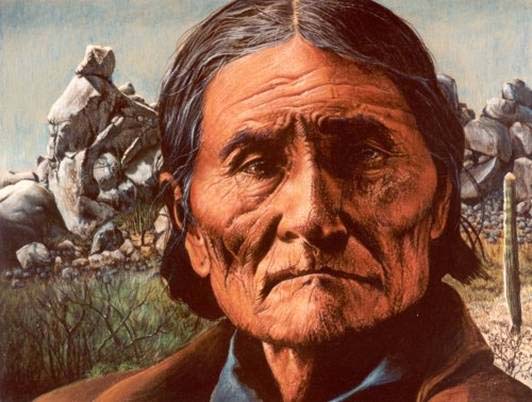
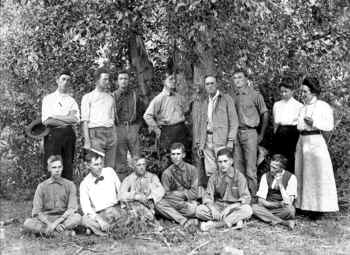 In
the picture are 10 stalwart young men, several of whom would gain fame
as first-rate archaeologists. Shown with them is Dr. Edgar L. Hewett,
head of training for the field school and the museum's newly appointed
director.
In
the picture are 10 stalwart young men, several of whom would gain fame
as first-rate archaeologists. Shown with them is Dr. Edgar L. Hewett,
head of training for the field school and the museum's newly appointed
director.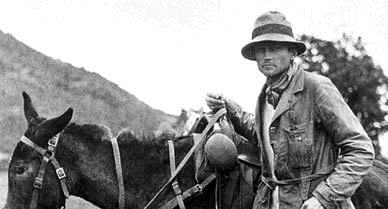 Harry
Bingham's father's crowning achievement was his exploration of Machu
Picchu almost 100 years ago. Yet Hiram Bingham III's status as the
"discoverer" of the ruins is in dispute, and the Peruvian
government has demanded that Yale University, where Bingham taught,
return all the artifacts he took home from Inca lands.
Harry
Bingham's father's crowning achievement was his exploration of Machu
Picchu almost 100 years ago. Yet Hiram Bingham III's status as the
"discoverer" of the ruins is in dispute, and the Peruvian
government has demanded that Yale University, where Bingham taught,
return all the artifacts he took home from Inca lands.
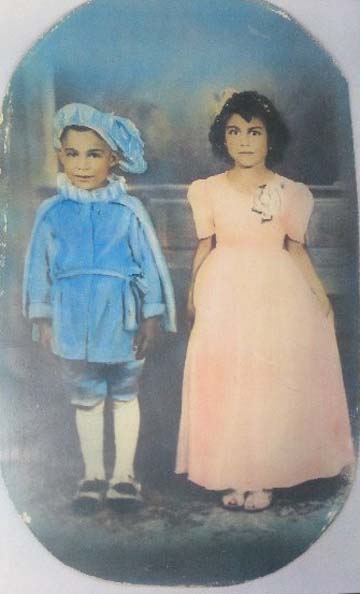 I
thought that you might use these pictures in your next issue of Somos
Primos in Texas history or Family genealogy. They were taken at the
San Fernando Mission in San Antonio Texas, circa 1940/41 at either a
Fiestas Patrias celebration or a Christmas pageant per my sister,
Maria, who is now in her mid-seventies. My sister was maybe 6/7 years
at the time. My brother was 4/5. My mother, Sapopa Rendon Hernandez,
hand sewed these outfits for both my brother Francisco, in the blue
page boy costume and Maria, in the pink princess costume. An
interesting point about this picture is that unknown to my mother, who
is now deceased, and to my siblings at that time, is that they were
wearing these outfits in a Mission that was built in the honor of King
Fernando 111, their grandfather, approximately 18 generations
removed!!
I
thought that you might use these pictures in your next issue of Somos
Primos in Texas history or Family genealogy. They were taken at the
San Fernando Mission in San Antonio Texas, circa 1940/41 at either a
Fiestas Patrias celebration or a Christmas pageant per my sister,
Maria, who is now in her mid-seventies. My sister was maybe 6/7 years
at the time. My brother was 4/5. My mother, Sapopa Rendon Hernandez,
hand sewed these outfits for both my brother Francisco, in the blue
page boy costume and Maria, in the pink princess costume. An
interesting point about this picture is that unknown to my mother, who
is now deceased, and to my siblings at that time, is that they were
wearing these outfits in a Mission that was built in the honor of King
Fernando 111, their grandfather, approximately 18 generations
removed!! 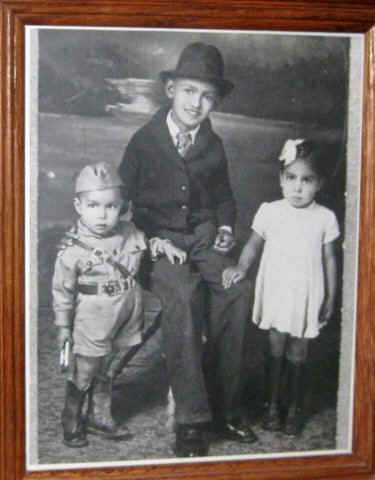

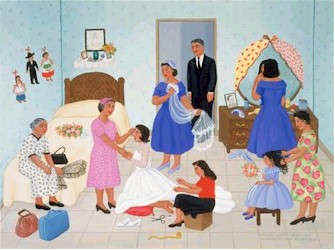 You are cordially
invited to a presentation by renowned Chicana artist Carmen Lomas
Garza
You are cordially
invited to a presentation by renowned Chicana artist Carmen Lomas
Garza 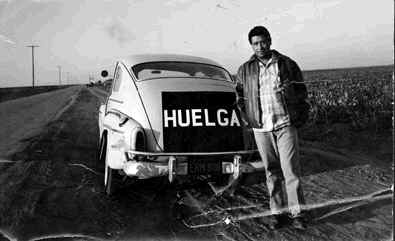
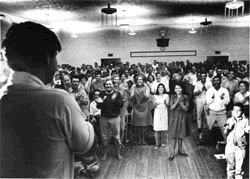 César
Chávez addresses an enthusiastic crowd, ca. 1966–1968.
Photograph by Jon Lewis. Courtesy of the
César
Chávez addresses an enthusiastic crowd, ca. 1966–1968.
Photograph by Jon Lewis. Courtesy of the 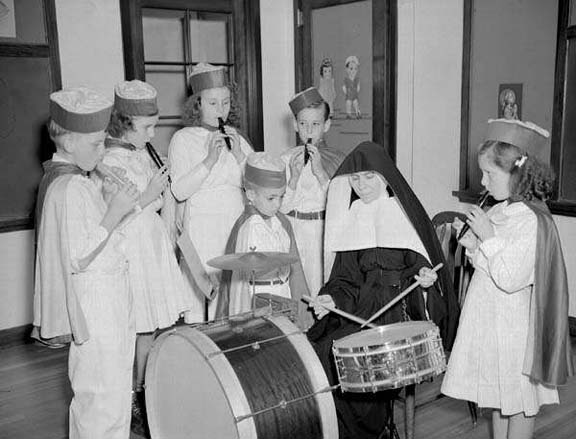
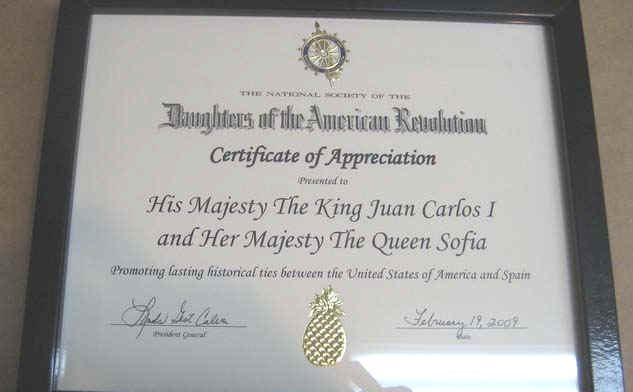
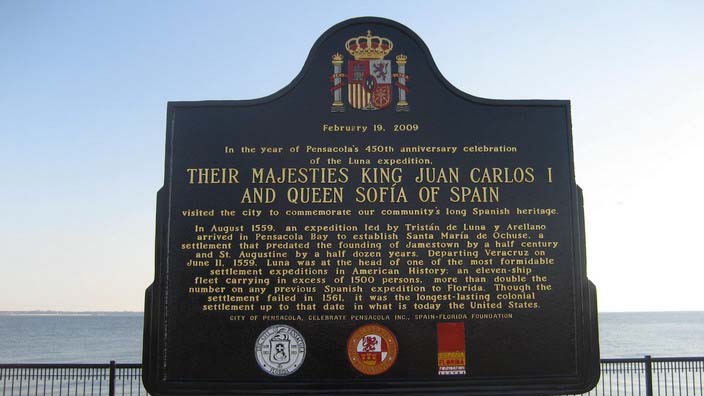
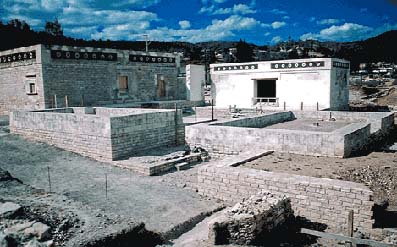
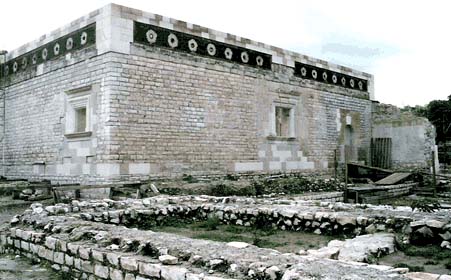
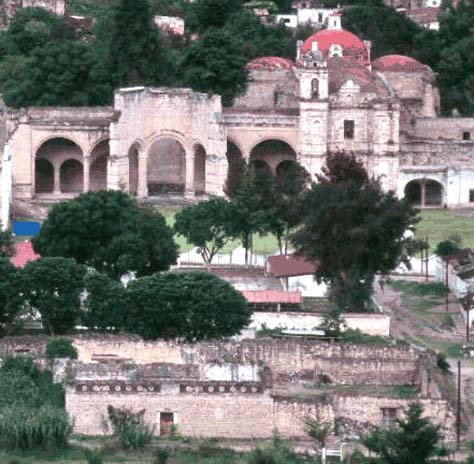 To
the west of the great Dominican priory of St. Peter and St. Paul
Teposcolula, in the Mixteca region of Oaxaca, stands the so-called
"Casa de la Cacica," a walled compound and palace, or tecpan,
built to house the local native nobility and serve as an
administrative center.
To
the west of the great Dominican priory of St. Peter and St. Paul
Teposcolula, in the Mixteca region of Oaxaca, stands the so-called
"Casa de la Cacica," a walled compound and palace, or tecpan,
built to house the local native nobility and serve as an
administrative center.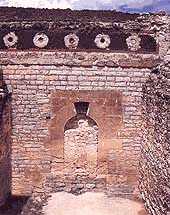 Currently
in the final phase of restoration and reconstruction (above left: site
in 2009 ©Robert Jackson ) all the structures display plain but well
laid ashlar stonework. The main building, or "palace," is
the most elaborate, fitted with shaped stone openings and banded at
roof level by ornamental disk friezes, signifying an elite residence
in the Mexican tradition* .
Currently
in the final phase of restoration and reconstruction (above left: site
in 2009 ©Robert Jackson ) all the structures display plain but well
laid ashlar stonework. The main building, or "palace," is
the most elaborate, fitted with shaped stone openings and banded at
roof level by ornamental disk friezes, signifying an elite residence
in the Mexican tradition* .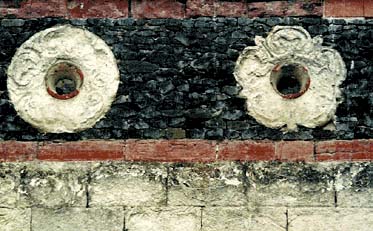 The
Friezes
The
Friezes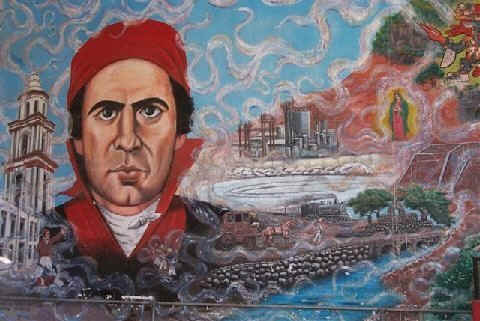

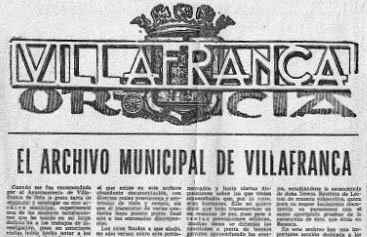
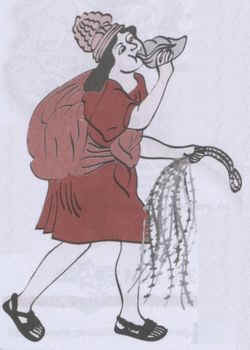
 Protagonista. El escritor Carlos Fuentes durante las actividades
previas al Salón del Libro en París a celebrarse a partir de hoy y
hasta el próximo 18 de marzo.
Protagonista. El escritor Carlos Fuentes durante las actividades
previas al Salón del Libro en París a celebrarse a partir de hoy y
hasta el próximo 18 de marzo.